Gravitational Focusing of Low-Velocity Dark Matter on the Earth’s Surface
Abstract
1. Introduction
2. Focusing by the Earth
2.1. Point Mass
2.2. Uniform Density Sphere
2.3. Gravitational Focusing by the Earth
3. Spectral Density and Flux Amplification
3.1. Spectral DM Density
3.2. Amplification
3.3. Focal Length and Focusing Velocity
3.4. Other Focusing Objects
4. Summary
Funding
Conflicts of Interest
References
- Sofue, Y. Rotation and mass in the Milky Way and spiral galaxies. Publ. Astron. Soc. Jpn. 2017, 69, R1. [Google Scholar] [CrossRef]
- Sofue, Y. Rotation Curve of the Milky Way and the Dark Matter Density. arXiv 2020, arXiv:2004.11688. [Google Scholar] [CrossRef]
- Salucci, P. The distribution of dark matter in galaxies. Astron. Astrophys. Rev. 2019, 27, 2. [Google Scholar] [CrossRef]
- Alenazi, M.S.; Gondolo, P. Directional recoil rates for WIMP direct detection. Phys. Rev. D 2008, 77, 043532. [Google Scholar] [CrossRef]
- Graham, P.W.; Kaplan, D.E.; Mardon, J.; Rajendran, S.; Terrano, W.A. Dark matter direct detection with accelerometers. Phys. Rev. D 2016, 93, 075029. [Google Scholar] [CrossRef]
- Bandyopadhyay, A.; Majumdar, D. Diurnal and Annual Variations of Directional Detection Rates of Dark Matter. Astrophys. J. 2012, 746, 107. [Google Scholar] [CrossRef]
- Alenazi, M.S.; Gondolo, P. Phase-space distribution of unbound dark matter near the Sun. Phys. Rev. D 2006, 74, 083518. [Google Scholar] [CrossRef]
- Peter, A.H.G. Dark matter in the Solar System. I. The distribution function of WIMPs at the Earth from solar capture. Phys. Rev. D 2009, 79, 103531. [Google Scholar] [CrossRef]
- Peter, A.H.G. Dark matter in the Solar System. II. WIMP annihilation rates in the Sun. Phys. Rev. D 2009, 79, 103532. [Google Scholar] [CrossRef]
- Peter, A.H.G. Dark matter in the Solar System. III. The distribution function of WIMPs at the Earth from gravitational capture. Phys. Rev. D 2009, 79, 103533. [Google Scholar] [CrossRef]
- Lee, S.K.; Lisanti, M.; Peter, A.H.G.; Safdi, B.R. Effect of Gravitational Focusing on Annual Modulation in Dark-Matter Direct-Detection Experiments. Phys. Rev. Let. 2014, 112, 011301. [Google Scholar] [CrossRef] [PubMed]
- Kouvaris, C.; Langæble, K.; Grønlund Nielsen, N. The spectrum of darkonium in the Sun. J. Cosmol. Astropart. Phys. 2016, 2016, 012. [Google Scholar] [CrossRef]
- Prézeau, G. Dense Dark Matter Hairs Spreading Out from Earth, Jupiter, and Other Compact Bodies. Astrophys. J. 2015, 814, 122. [Google Scholar] [CrossRef]
- Kavanagh, B.J.; Catena, R.; Kouvaris, C. Signatures of Earth-scattering in the direct detection of Dark Matter. J. Cosmol. Astropart. Phys. 2017, 2017, 012. [Google Scholar] [CrossRef]
- Kennett, B.L.N. On the density distribution within the Earth. Geophys. J. Int. 1998, 132, 374. [Google Scholar] [CrossRef]

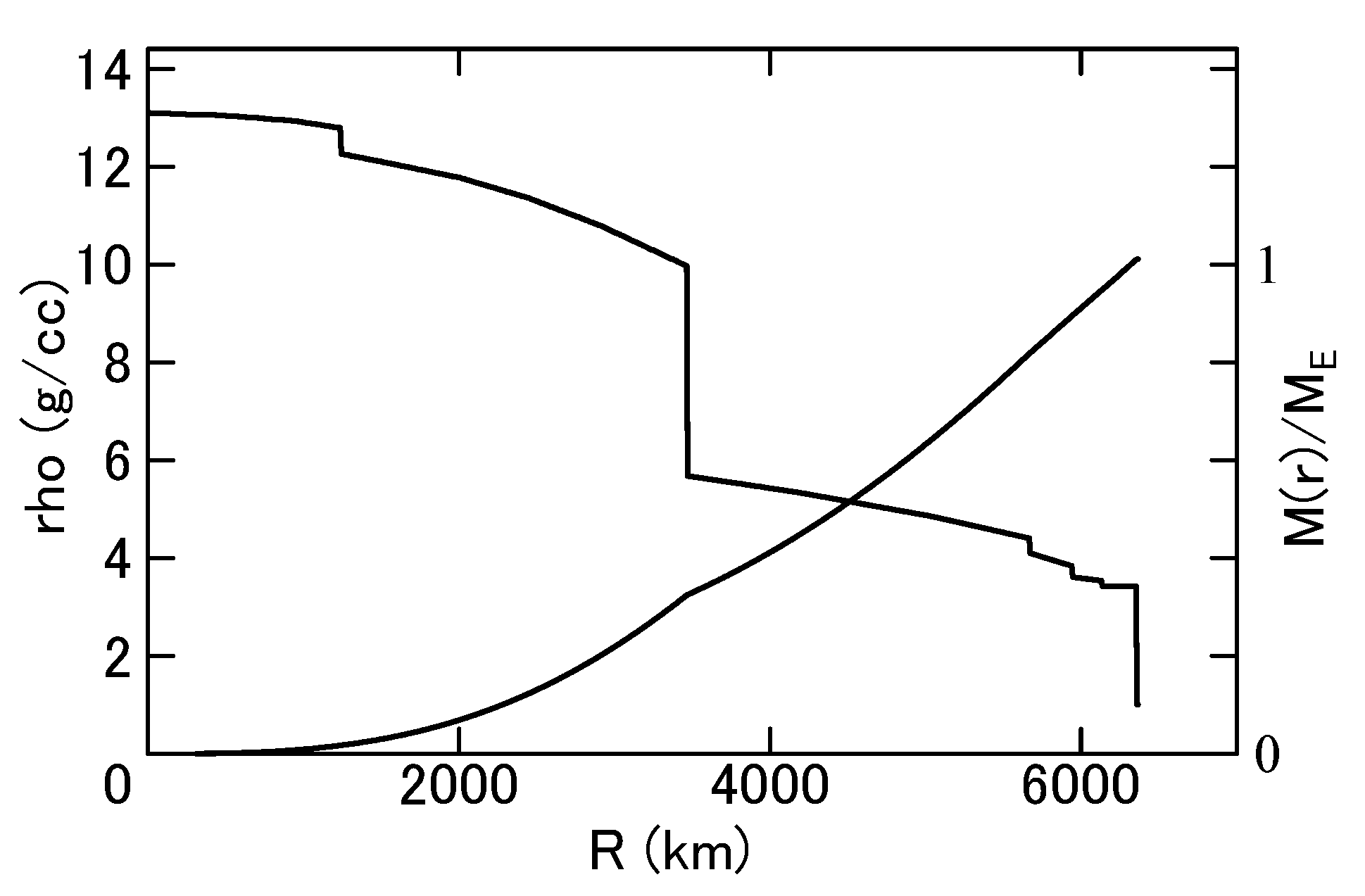
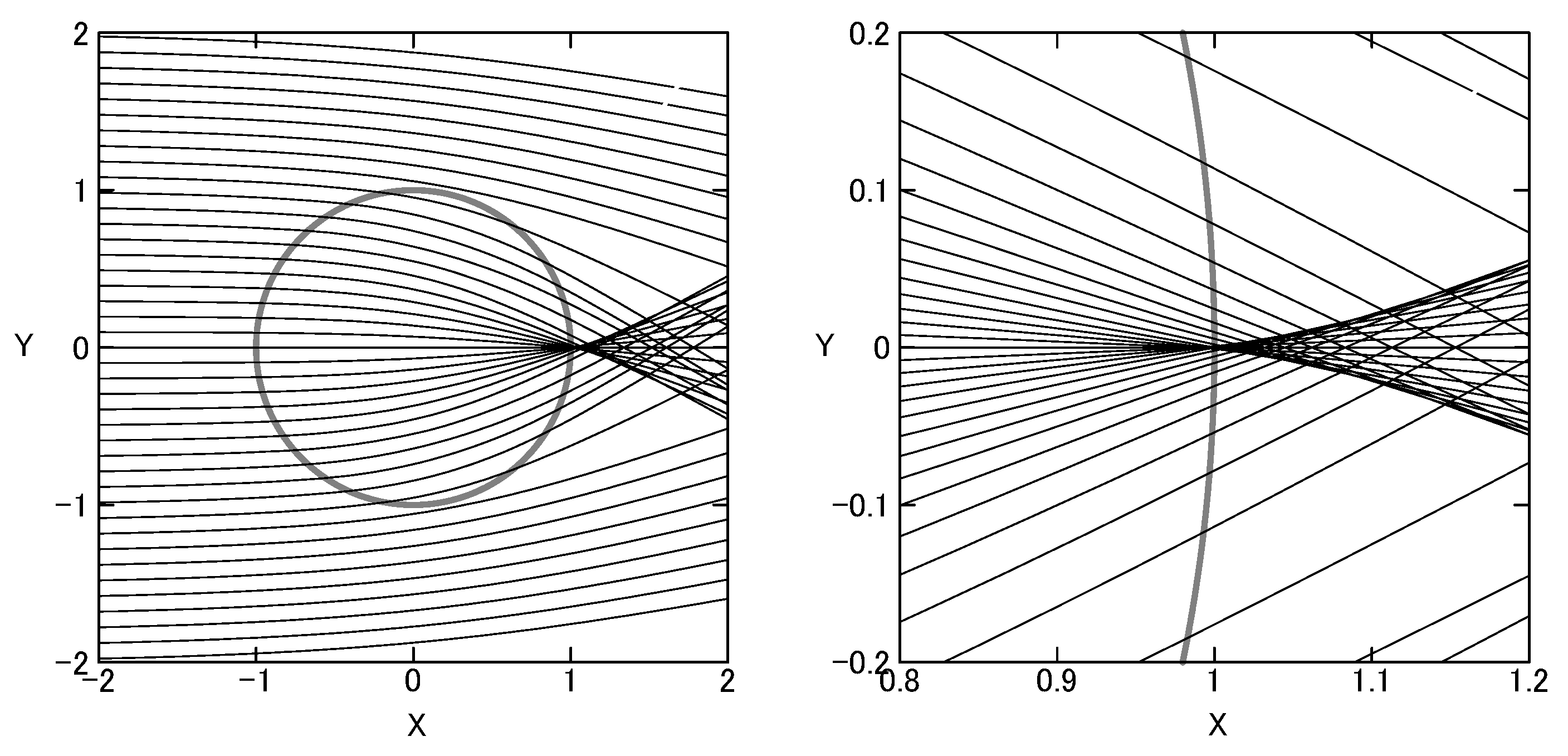
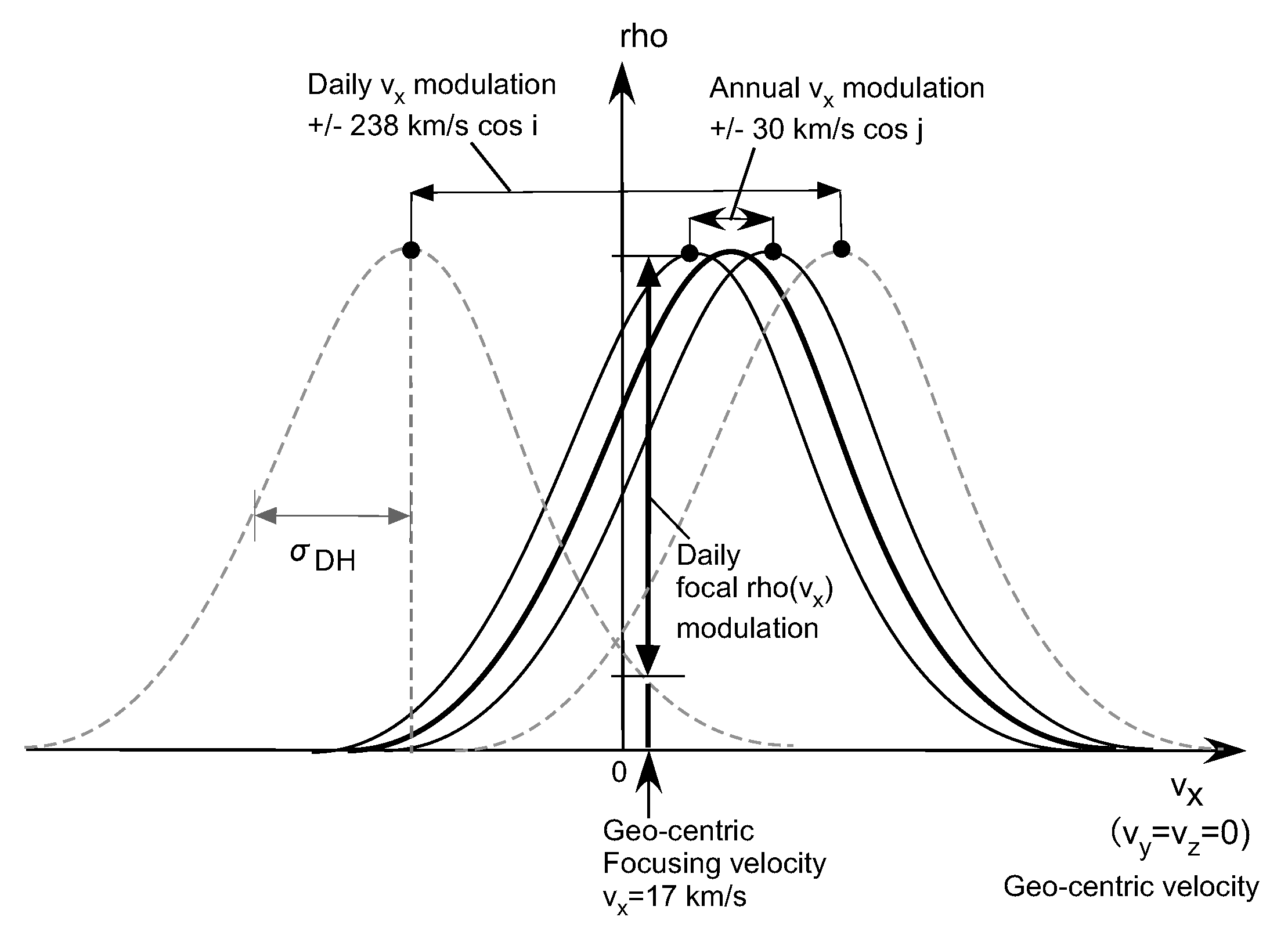
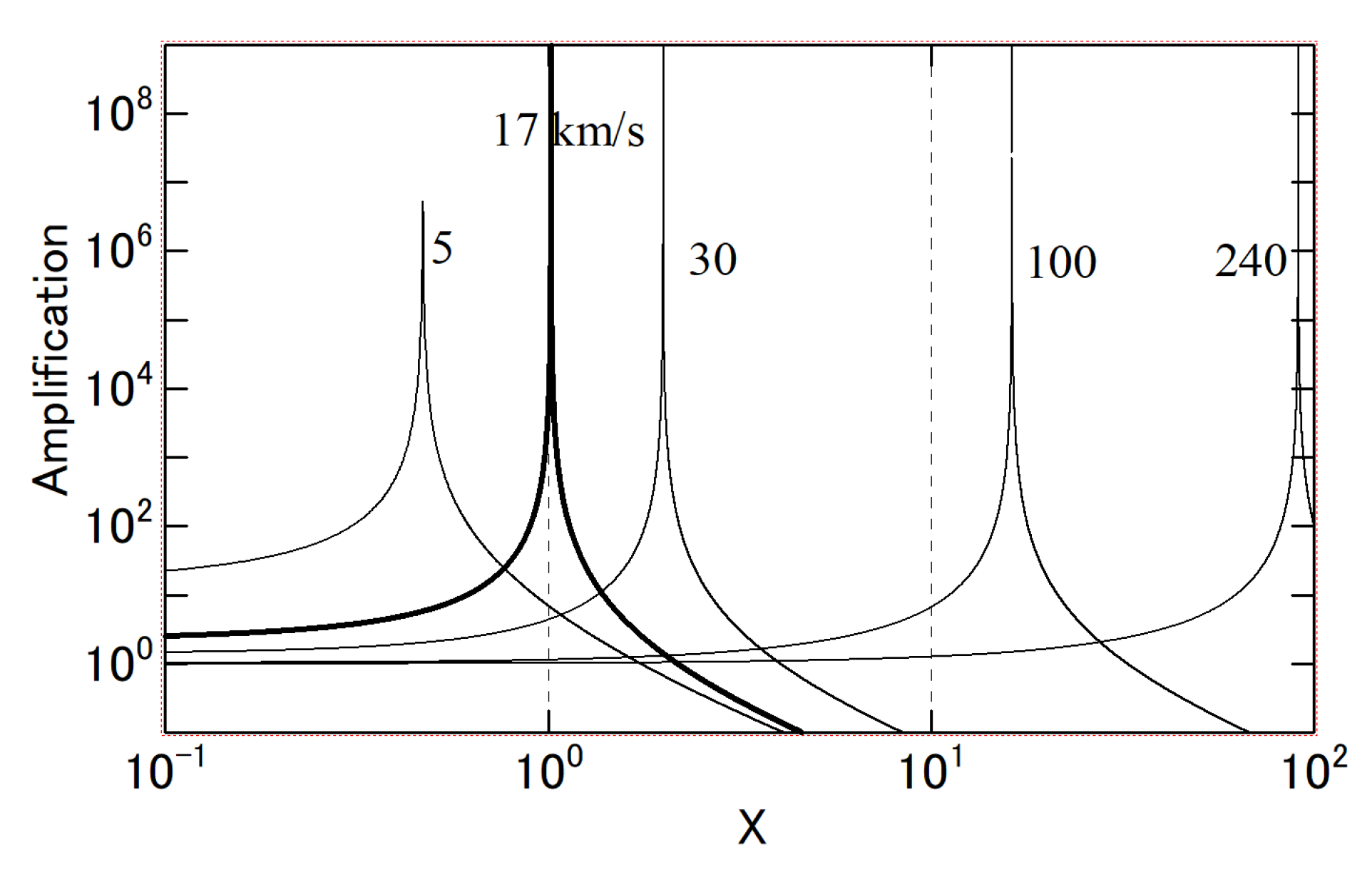
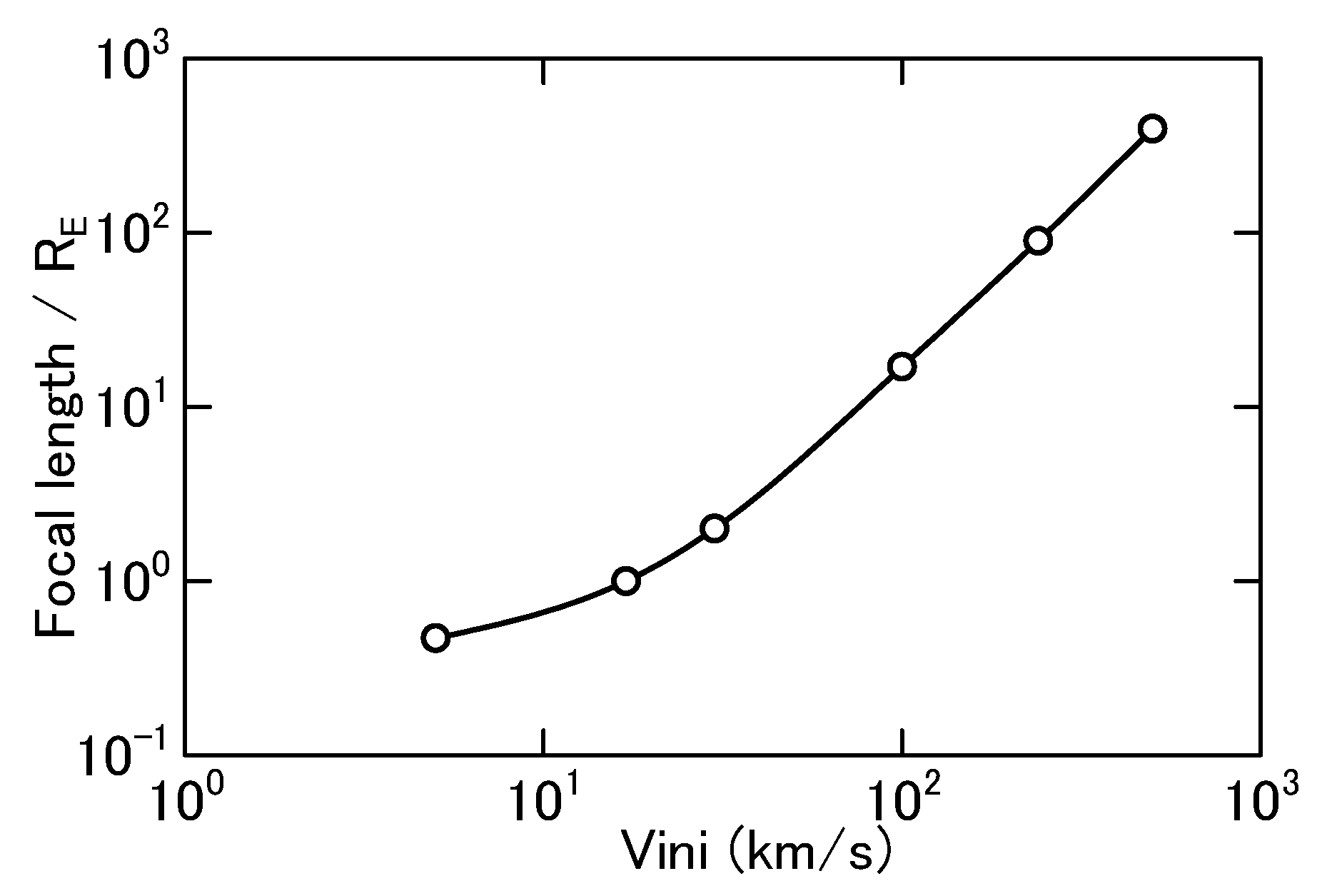
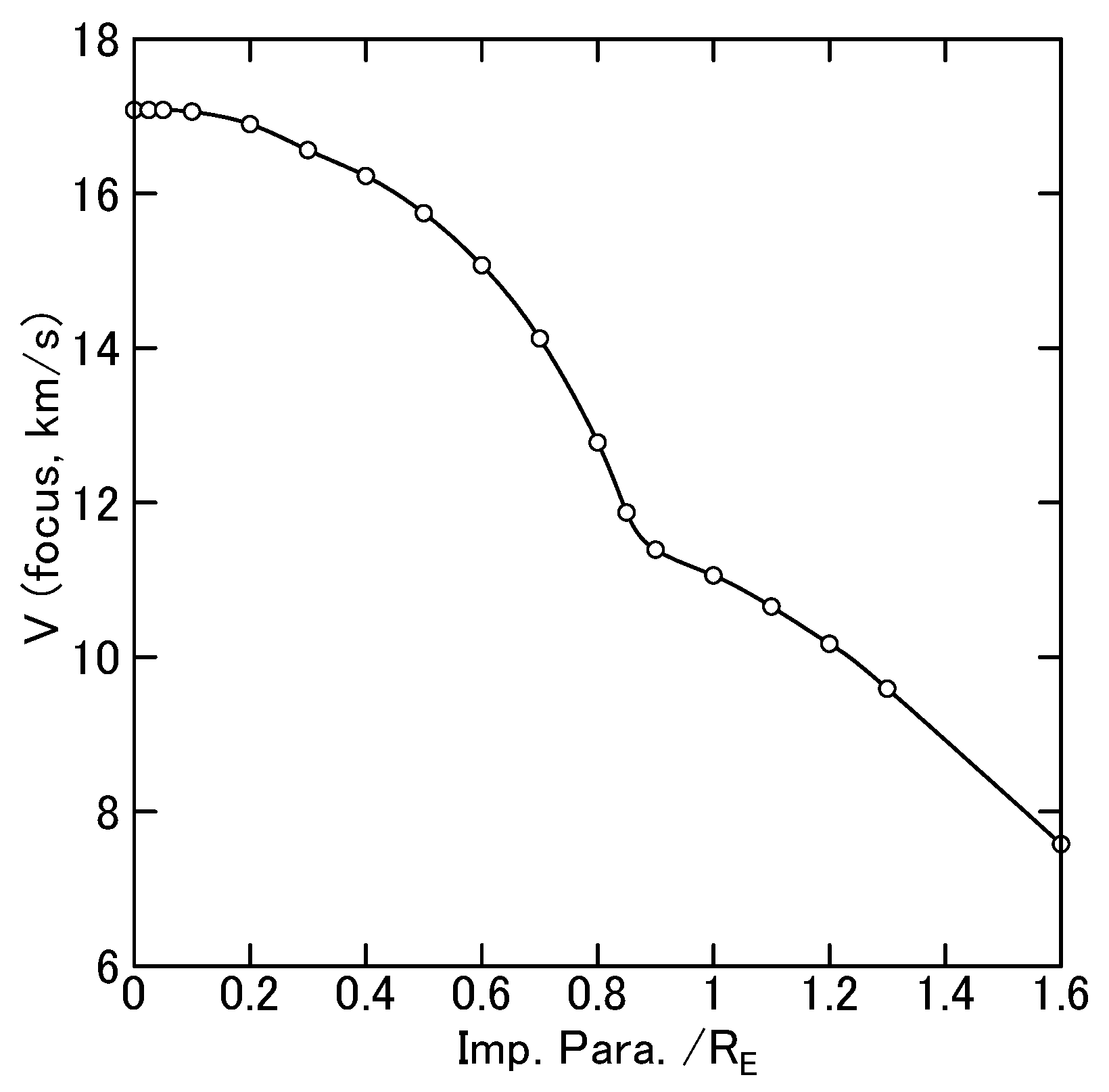
© 2020 by the author. Licensee MDPI, Basel, Switzerland. This article is an open access article distributed under the terms and conditions of the Creative Commons Attribution (CC BY) license (http://creativecommons.org/licenses/by/4.0/).
Share and Cite
Sofue, Y. Gravitational Focusing of Low-Velocity Dark Matter on the Earth’s Surface. Galaxies 2020, 8, 42. https://doi.org/10.3390/galaxies8020042
Sofue Y. Gravitational Focusing of Low-Velocity Dark Matter on the Earth’s Surface. Galaxies. 2020; 8(2):42. https://doi.org/10.3390/galaxies8020042
Chicago/Turabian StyleSofue, Yoshiaki. 2020. "Gravitational Focusing of Low-Velocity Dark Matter on the Earth’s Surface" Galaxies 8, no. 2: 42. https://doi.org/10.3390/galaxies8020042
APA StyleSofue, Y. (2020). Gravitational Focusing of Low-Velocity Dark Matter on the Earth’s Surface. Galaxies, 8(2), 42. https://doi.org/10.3390/galaxies8020042



